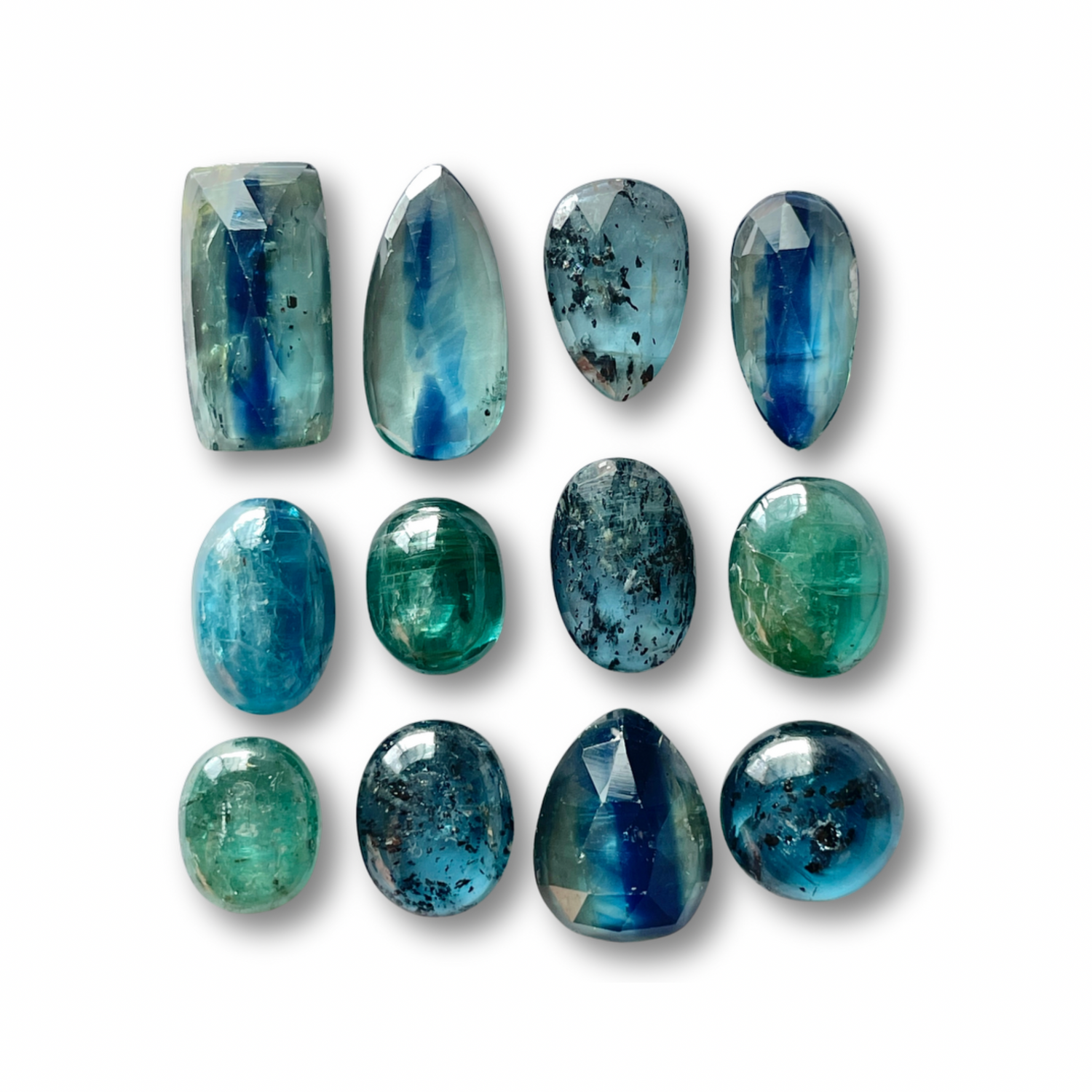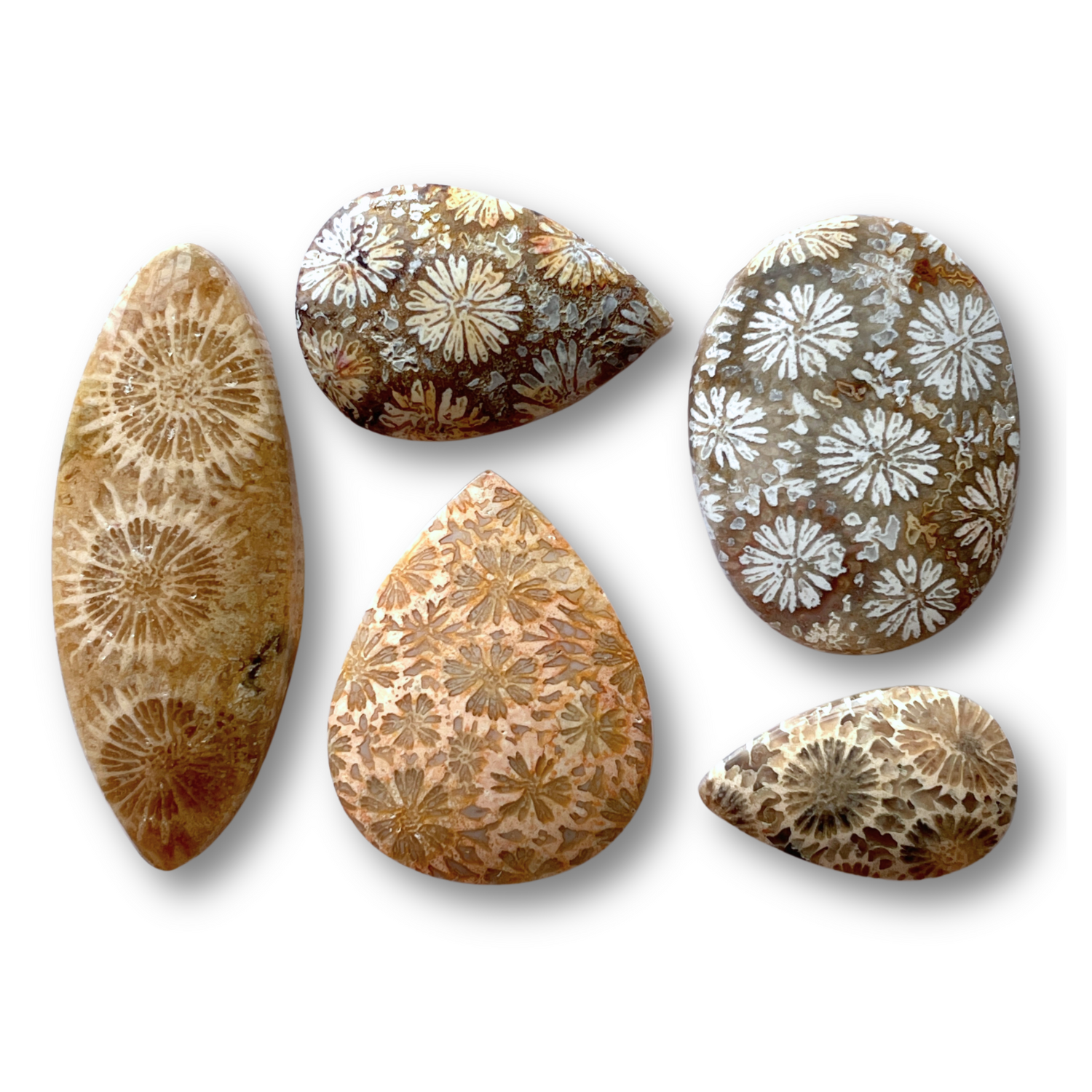
All About Morenci Turquoise with Pyrite - A Collector’s Dream
Share

Morenci turquoise, known for its stunning blue hues and striking pyrite inclusions, is a gemstone with a rich history and unmatched allure. As a trusted gemstone cabochons supplier in Australia, we take pride in offering a curated collection of this rare and beautiful stone.
In this blog, we’ll explore the origins of Morenci turquoise, its unique characteristics, and how to tell the difference between high-grade and low-grade stones.
The History of Morenci Turquoise
Morenci turquoise hails from the Morenci mine in southeastern Arizona, USA. This copper mine was once a significant source of turquoise, producing some of the world’s finest stones until its closure in the 1970s.
Though the mine is no longer operational, its legacy lives on through the rare and highly sought-after turquoise it produced. Morenci turquoise is prized not only for its vivid blue colour but also for the metallic pyrite inclusions that set it apart from other types of turquoise.
Today, Morenci turquoise is primarily sourced from old collections, making it a treasure for collectors and jewellery makers.

What Makes Morenci Turquoise Unique?
Morenci turquoise stands out for its vibrant blue colour and the presence of shimmering pyrite inclusions. These inclusions often resemble silver flecks and provide a unique contrast to the stone’s bright blue hue.
Several factors contribute to the high value of Morenci turquoise, including:
Rarity - The closure of the Morenci mine means no new turquoise is being mined, adding to its scarcity.
Pyrite Inclusions - The metallic inclusions make each stone uniquely beautiful, increasing its desirability.
Colour - Morenci turquoise is known for its vivid, sky-blue colour with minimal matrix.
Historical Value - Its origins in a renowned mine give it historical significance and enduring appeal.
At Coffee + Gems, we are proud to offer a range of high-grade Morenci turquoise cabochons, each hand-picked for its exceptional beauty and quality.

The Role of Pyrite in Morenci Turquoise
Pyrite inclusions are a defining feature of Morenci turquoise. These metallic flecks are naturally formed during the stone’s creation and vary in size and distribution.
Stones with abundant, evenly distributed pyrite are considered high grade while those with sparse or irregular pyrite inclusions are typically lower grade.
The contrast between the bright blue of the turquoise and the silver shimmer of pyrite creates a truly eye-catching effect, especially in high-grade specimens.
How to Identify High-Grade vs. Low-Grade Morenci Turquoise
Understanding the difference between high-grade and low-grade Morenci turquoise is crucial when choosing the right cabochon for your needs. Here’s a quick guide:
Colour : Bright, vibrant blue with little to no visible matrix (high grade) vs. Less vibrant, sometimes with grey or brown matrix detracting from the colour (low grade).
Pyrite Inclusions : Abundant, evenly distributed pyrite flecks that shimmer against the turquoise (high grade) vs. Sparse, uneven, or tarnished pyrite inclusions (low grade).
Cut and Finish : Expertly cut cabochons with a smooth, polished finish to enhance the stone’s natural beauty (high grade) vs. Poorly cut or rough stones with uneven surfaces (low grade).

Morenci turquoise with pyrite is truly a gemstone of extraordinary beauty and rarity. Its vibrant colour, shimmering inclusions, and rich history make it a favourite among collectors and jewellery makers.
As one of the leading suppliers of Morenci turquoise cabochons in Australia, we offer a wide range of stones to suit every taste and budget. Whether you’re a jewellery maker looking for a more affordable stone for your designs or a collector searching for a high-grade piece to enhance your collection, we have the perfect cabochon for you.
You can find our range of high-grade Morenci turquoise cabochons, perfect for creating statement jewellery or adding to your gemstone collection.



